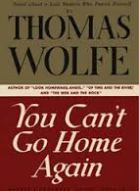10 Famous Alcoholic Authors
Here are 10 famous alcoholic authors and their favourite beverages:
(September 30th 1924 – August 25th 1984)
Capote was a prolific writer of short stories, novels, plays and nonfiction, whose accomplishments include at least 20 films and television dramas having been produced from his works. He was a notorious heavy drinker. While writing In Cold Blood, Capote would allegedly have a double martini before lunch, another with lunch and a stinger after. Capote’s heavy drinking was to continue. He died aged 59 from liver cancer.
Favourite Beverage: Martini (double)/Screwdriver
Charles Bukowski  (August 16th 1920 – March 9th 1994)
(August 16th 1920 – March 9th 1994)
Bukowski was a novelist, poet and short-story writer, who is regarded as being the ‘laureate of American lowlife’. He started drinking at 13 and never looked back. In his younger years he was a bar frequenter, but in later years he preferred to drink at home. Though by his own admission he suffered three hundred hangovers a year, Bukowski never quit the habit. Despite this excess he lived to 73.
Favourite Beverage: Whiskey
Dorothy Parker (August 22nd 1893 – June 7th 1967)
(August 22nd 1893 – June 7th 1967)
Dorothy Parker was renowned for her sardonic wit and writing abilities. A lifelong heavy drinker, she once famously said about her favourite drink martini: ‘I like to have a martini, Two at the very most. After three I’m under the table, After four I’m under my host.’ Little has been documented about Parker’s drinking habits, perhaps because as a woman her alcohol excess was never glorified.
Favourite Beverage: Martini
Jack Kerouac (March 12th 1922 – October 21st 1969)
(March 12th 1922 – October 21st 1969)
American novelist, writer, poet and artist Jack Kerouac was a member of the Beat Generation that also included William S. Burroughs and Allen Ginsberg. Kerouac was a very heavy drinker. The author was acutely aware of his drinking problem, often expressing a desire to quit or at least moderate his habit. In his book, Big Sur, Kerouac wrote, ‘Don’t drink to get drunk. Drink to enjoy life.’
Favourite Beverage: Margarita
James Joyce (February 2nd 1882 – January 13th 1941)
(February 2nd 1882 – January 13th 1941)
Irish novelist and poet James Augustine Aloysius Joyce is regarded as one of the most influential writers of the modernist avant-garde. Joyce was a notorious binge drinker, who was adamant that he could not write as well without the aid of alcohol. During his time living in Paris Joyce was a drinking buddy of Ernest Hemingway. The slightly-built Joyce was said to often start bar fights and then hide behind the much bigger Hemingway.
Favourite Beverage: Wine
Hunter S. Thompson  (July 18th 1937 – February 20th 2005)
(July 18th 1937 – February 20th 2005)
The father of Gonzo journalism was an iconic figure in the counter-culture. Hunter S. Thompson first became famous internationally for his book, Hells Angels (1967). The author was known for his lifelong heavy use of alcohol. The writer drank a wide range of alcoholic beverages. Never one for the vagaries of waiters, Thompson would typically order 3 to 6 drinks at a time.
Favourite Beverage: Wild Turkey
Ernest Hemingway (July 21st 1899 – July 2nd 1961)
(July 21st 1899 – July 2nd 1961)
Ernest Hemingway is remembered as a pillar of American literature, a writer with a unique style, who won both The Pulitzer Prize for Fiction (1953) and The Nobel Prize in Literature (1954). The iconic writer was a notorious drinker for most of his life, though he did not write whilst under the influence. A number of alcohol related quotes have been attributed to Hemingway, including, ‘Always do sober what you said you’d do drunk.’
Favourite Beverage: Mojito
William Faulkner (September 25th 1897 – July 6th 1962)
(September 25th 1897 – July 6th 1962)
William Cuthbert Faulkner to give his full name is one of the most important writers in American history. A lifelong heavy drinker, Faulkner, in contrast to many writers, liked to write under the influence – a bottle of whiskey, preferably bourbon was generally within arms reach. The author was notorious for his binge drinking and it was fortunate that he had a remarkable capacity for recovery. Faulkner once said, ‘Civilization begins with distillation.’
Favourite Beverage: Whiskey
Scott Fitzgerald  (September 24th 1896 – December 21st 1940)
(September 24th 1896 – December 21st 1940)
Scott Fitzgerald was an American author of novels and short stories, who is widely accepted as being one of the greatest writers of the 20th Century. Alcohol and alcoholics hold a prominent place in much of F. Scott Fitzgerald’s writing, which is perhaps not surprising considering the author was an alcoholic from college days to his death from an alcohol related heart attack aged 44.
Favourite Beverage: Gin Rickey
John Cheever  (May 27th 1912 – June 18th 1982)
(May 27th 1912 – June 18th 1982)
Sometimes referred to as ‘the Chekhov of the suburbs’, John Cheever is recognised as being one of the most important short story writers of the 20th Century. He also wrote four novels. At the height of his literary career Cheever began a 20 year struggle with alcoholism. He did not admit to having a problem with alcohol until he was sent to a rehabilitation centre in 1972. Cheever managed to quit the habit.
Favourite Beverage: Gin
Click here to sign up for my newsletter.

















































































